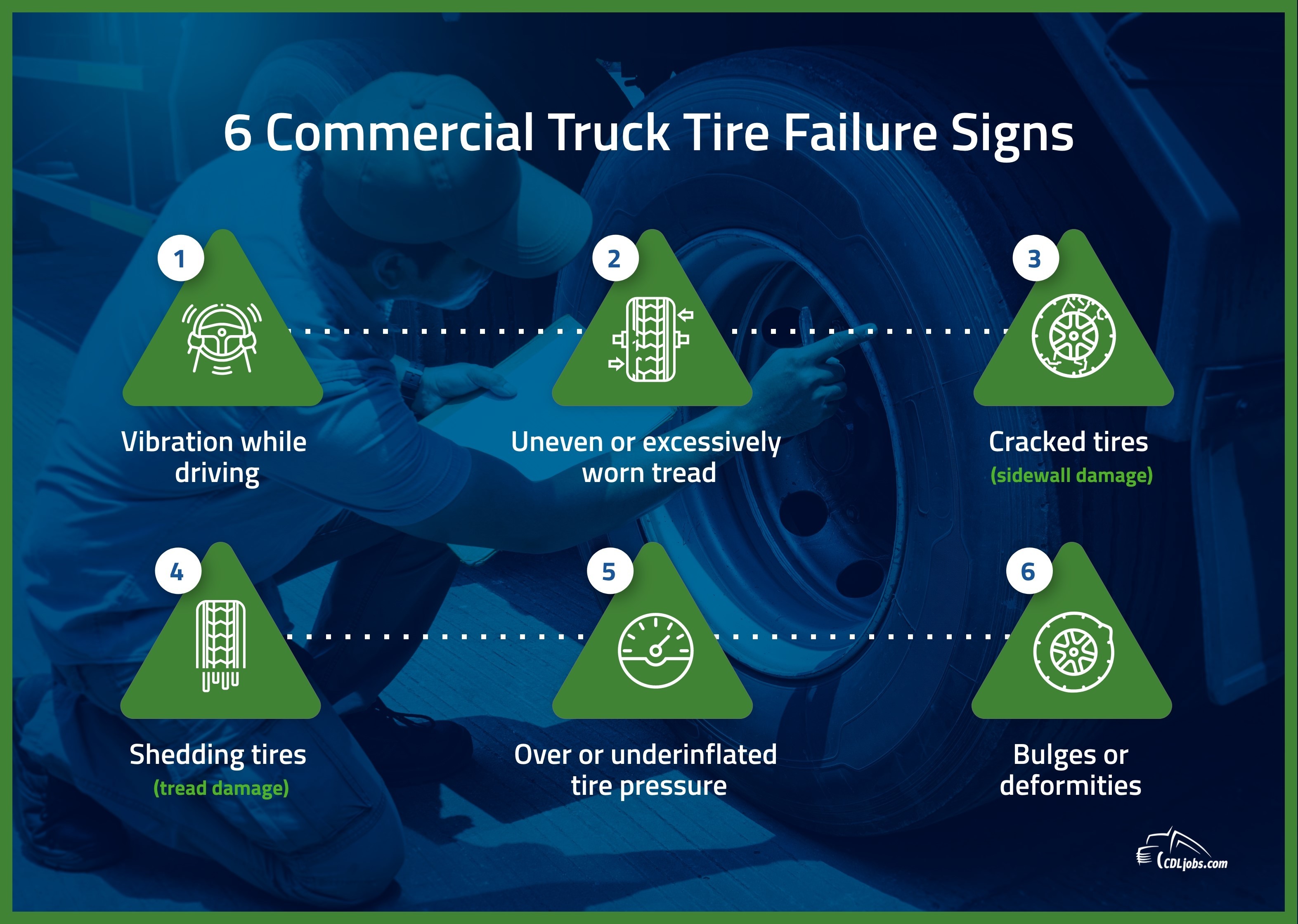Commercial truck tires are essential equipment on your tractor and trailer. While designed for frequent and heavy use, continual monitoring is critical for safety.
Discover six crucial warning signs indicating potential commercial truck tire problems may be ahead. Learn more about maintenance and preventative measures you may take to avoid a costly or dangerous situation.

1. Vibration While Driving
If you’re experiencing vibration while driving it could be an indicator your wheels are misaligned or unbalanced. The best action would be to pull your truck over in a safe spot to check your tires thoroughly. As you’re reviewing, check for any deformities or sign of wear. If you suspect your tires needed to be replaced, signal your employer and call your nearest mechanic or tow truck company for assistance.
2. Uneven or Excessively Worn Tread
While inspecting your tires be alert for signs of tread wear. If your tires are noticeably worn down it should be retreaded or replaced promptly to avoid a potential blowout. The bumps and ridges in your tires help to provide traction for your truck. In the winter times especially, you can become more at-risk if your tires are not designed to perform in the heavy snow.
3. Cracked tire Sidewalls
Often the most dangerous tire failures happen due to damaged tire sidewalls. Once a crack in your tire occurs it is typically beyond repair. You must replace the tires as soon as possible or you run the risk of causing a potentially serious accident.
4. Shedding Tires
Truck tires are made in layers. These give them extra robustness, helping you ride on the same set for longer. Shedding is an indication of improper inflation or alignment. This may not predict that the tire is about to fail, but it does mean that such an outcome may happen eventually.
5. Driving too Far with Over/underinflated tires
Proper tire maintenance is a big part of staying safe on the road. Just like any other truck safety equipment, you want to be sure your tires are ready when you need them. However, many drivers are riding on under- or overinflated tires. Others may have tires that are mounted poorly, causing uneven wear.
6. Bulges or Deformities
Another common problem with the sidewalls is bulging or bubbling. This is an indication that the tire is defective or worn to the point of being compromised. These occur because part of the sidewall is weak. Bulging will gradually burst and cause the tire to fail catastrophically.
The good news is that you can get your tire retreaded. This process adds new layers to the tire, fixing the shedding and any normal wear. Some truckers choose to do this to save money on tires versus buying a completely new set.
Maintain Your Truck Tires and Stay Safe
As described above, there are lots of signs that your tires may be in bad shape. Fortunately, you can avoid getting to these points by simply maintaining your tires well. The following suggestions should help:
- Inflation: Periodically check your tires to make sure they are properly inflated. This is especially important as the weather changes. Tires in hot weather will have higher pressure than in cold weather. Remember to always check your tires when they are cold (it is best to do so before starting a journey).
- Inspection: Inspect your tires routinely for any damage or signs of failure.
- Alignment: Follow up on your maintenance services for wheel alignment to ensure your wheels are aligned for all road conditions. Avoiding this best practice can shorten your tire lifespan.



